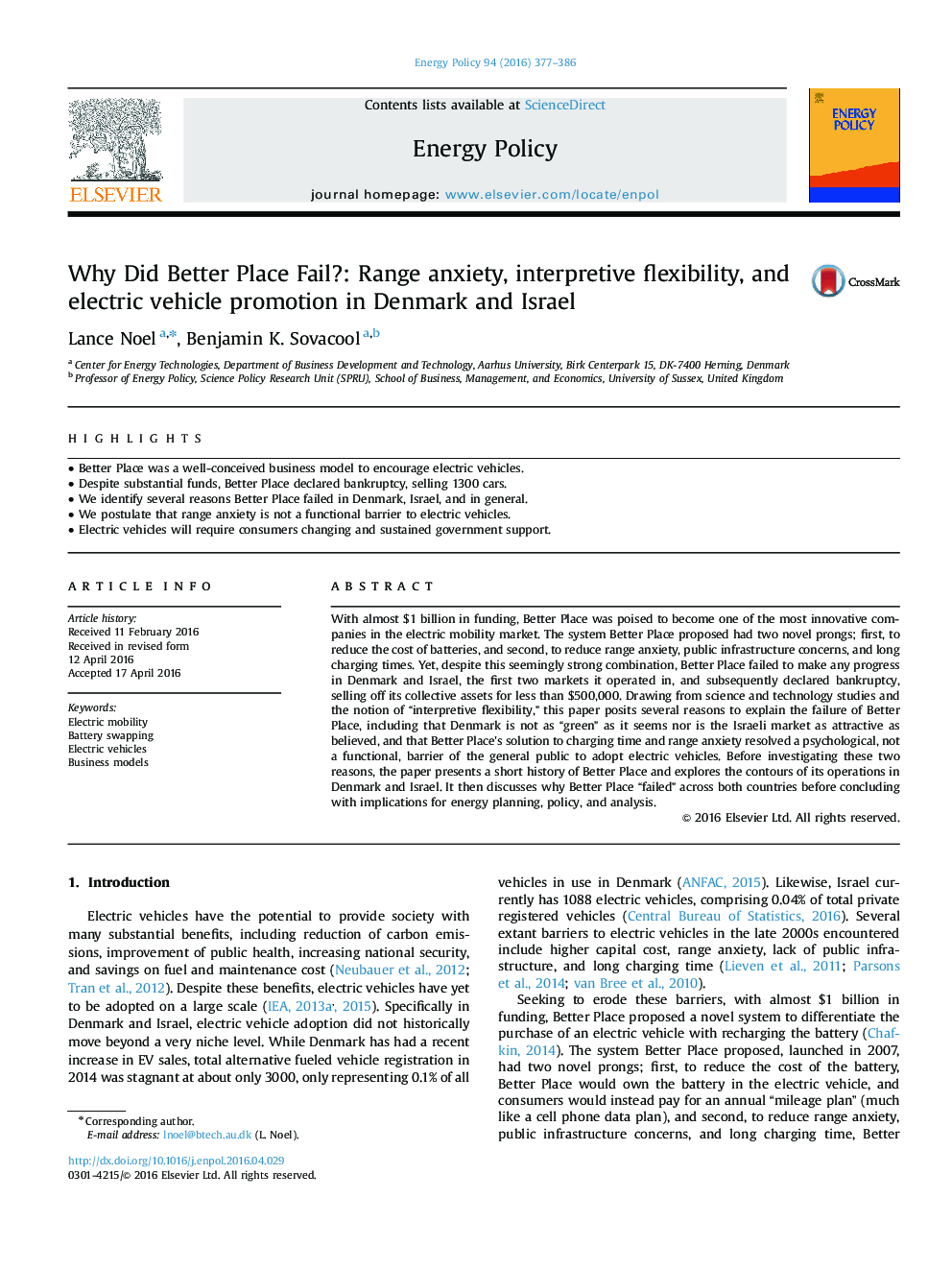| Article ID | Journal | Published Year | Pages | File Type |
|---|---|---|---|---|
| 7399392 | Energy Policy | 2016 | 10 Pages |
Abstract
With almost $1 billion in funding, Better Place was poised to become one of the most innovative companies in the electric mobility market. The system Better Place proposed had two novel prongs; first, to reduce the cost of batteries, and second, to reduce range anxiety, public infrastructure concerns, and long charging times. Yet, despite this seemingly strong combination, Better Place failed to make any progress in Denmark and Israel, the first two markets it operated in, and subsequently declared bankruptcy, selling off its collective assets for less than $500,000. Drawing from science and technology studies and the notion of “interpretive flexibility,” this paper posits several reasons to explain the failure of Better Place, including that Denmark is not as “green” as it seems nor is the Israeli market as attractive as believed, and that Better Place's solution to charging time and range anxiety resolved a psychological, not a functional, barrier of the general public to adopt electric vehicles. Before investigating these two reasons, the paper presents a short history of Better Place and explores the contours of its operations in Denmark and Israel. It then discusses why Better Place “failed” across both countries before concluding with implications for energy planning, policy, and analysis.
Related Topics
Physical Sciences and Engineering
Energy
Energy Engineering and Power Technology
Authors
Lance Noel, Benjamin K. Sovacool,
